D4DX: Braco E77DX vs. the WPX World Record
Etching his name into the CQ WPX history books—despite high winds, fried cables, and fake spots.
No Plans, No Problem
Braco E77DX hadn’t planned to chase a world record during CQ WPX SSB 2025. In fact, he hadn’t planned to operate at all. After a whirlwind month that included a DXpedition as V73WW, operating in KH6, a brief stop in Vienna, and then a spirited Russian DX Contest from E7DX, most mortals would’ve collapsed into bed. But when the offer came to once again operate from the legendary D4C station in Cape Verde, Braco said yes—almost involuntarily. “I couldn’t say no,” he admits. And who could blame him? In 2023, operating from the same site, he had come painfully close to breaking the world record for the Single Operator All Band High Power category.
Monte Verde Demands Respect
But paradise requires sweat equity. Perched high atop Monte Verde, the D4C QTH is equal parts dream and menace: known for stunning propagation—and punishing Atlantic wind. “This place is not a joke,” Braco said, recalling the list of repairs left after Max IZ4DPV's ARRL SSB contest effort just weeks earlier. With only days to go and a two-man crew—longtime friend and fellow VHF mate Flo OE3FTA—Braco set out with 120 kilograms of gear, climbing harnesses, and lots of SO2R-related items.
Delayed flights, a stubborn customs official, and a jostling 45-minute taxi ride up the mountain added color to the journey. And once at the site? Fixing antennas, rebuilding switching systems, and installing directional setups for the high bands that don’t normally feature in the multi-multi configuration. All while bracing for wind gusts forecasted to hit 100 km/h. “This is not the place where you ask where the microphone is when you arrive,” Braco quipped.
Chasing a Ghost
Braco wasn’t just in this for the fun. He was chasing a ghost—Jim W7EJ’s 2013 world record from Morocco under the call CN2R. It was a high bar, etched into the WPX history books for over a decade. But Braco had done his homework. For the better part of a year, he analyzed top-performing logs from D4C, CN2R, 8P5A, and PJ4K, building a spreadsheet-fueled strategy with obsessive precision. “I had a good target file,” he said. With propagation forecast to cooperate—ten meters whispering hints of promise—Braco needed just one more push: flawless execution.
The Two-Band Tango
The plan was to run 2BSIQ (two-band synchronized interleaved QSOing), where a single op works two bands nearly simultaneously. As always on D4, he faced the paradox of paradise: jaw-dropping pileups that, if not precisely managed, can actually slow you down. “Too huge pileups,” he said, noting that the main enemy of ultra-high rates is often success itself.
Gremlins in the Wires
Despite his meticulous prep, the gremlins still made their rounds. A faulty stackmatch cable on 40 meters blocked him from transmitting and receiving in multiple directions simultaneously, limiting flexibility during key propagation windows. But worse was the human element: DX cluster abuse. On Sunday, his run frequency was peppered with fake spots, resulting in frustrating dupes and a cratered rate. “I was hoping to reach over 7,000 QSOs,” he said. In the end, he logged 6,862.
A Record Falls
What he missed in raw QSO count, Braco made up in multipliers and consistency. He ended with 1,530 unique prefixes—enough for a claimed score of 37,021,410. That’s not just a personal best. It’s a potential world record, landing more than 23% above the previous high-water mark. After log checking, Braco’s fingerprints will almost certainly be permanently etched in the WPX SSB record books.
Trouble at Home
While Braco was riding the wave on Monte Verde, his home QTH in Prijedor, Bosnia—the heart of the E7DX team—was once again under threat. A massive flood, eerily reminiscent of the 2014 disaster, crept toward the station. “The water just stopped a few centimeters before entering the shack,” he said. His teammate Vlado E70T was trapped at the station for two days, cut off from town, watching the water rise.
The Long Game
Braco’s path to D4DX in 2025 isn’t just a story of a contest weekend. It’s a career arc—a life devoted to radio technology and the sport of radio. From his home base in Vienna, he builds, repairs, and optimizes stations around the world. He’s operated from over a dozen exotic callsigns, competed at multiple WRTCs, and remains a go-to name in the business of turning tower fields into weapons of wireless precision. “Planning, building, rebuilding—that’s what I do,” he says simply.
The Invisible Ties
In the end, what makes this story resonate isn’t just the record. It’s the texture: the cold Monte Verde nights, the fried coax cable, the pileups surging like ocean breakers. It’s the voice of Flo OE3FTA saying yes with no hesitation. It’s the quiet strength of Julia, Braco’s partner, who supports every last crazy travel plan. And it’s the unspoken understanding between thousands of contesters across continents, sharing the same bands, the same challenge, the same joy.
So next time you tune across 20 meters and hear D4DX calling CQ, remember: that signal rode in on wind and wire, spreadsheets and sweat. And behind it, always, is Braco—smiling, tired, and already thinking about the next one.
The following screenshots from the Contest Online Scoreboard help illustrate the remarkable performance of Braco, E77DX, during the 2025 CQ WPX SSB contest, operating as D4DX from Cape Verde. These visuals offer a deeper look into his effort, strategy, and results throughout the 48-hour event.
Overall Category Placement
The first screenshot confirms Braco’s position at the very top of the Single Operator High Power All Band (SO HP AB) category—widely regarded as the contest’s most competitive field. His real-time scoreboard leadership reflects not only his experience but also the refined efficiency of the D4DX setup.Hourly QSO Rate (All Bands)
The second graphic displays Braco’s hourly QSO rate during his 36 hours of operating over the full 48 hours of the contest. Peaks and plateaus across the timeline give a sense of his operating rhythm, break strategy, and endurance. Few operators can sustain such consistently high rates, especially deep into the second day.Hourly QSO Rate by Band (10, 15, 20, 40, 80 meters)
A more granular look follows, with band-specific hourly QSO rates. This breakdown highlights how Braco adapted to band conditions, propagation windows, and pileup dynamics across 10, 15, 20, 40, and 80 meters. The data shows both tactical band selection and high-rate execution.QSO Comparison with HC8M (LU9ESD)
The final screenshot is a side-by-side QSO total comparison between Braco (D4DX) and the second-place finisher, Manu LU9ESD, who operated from the Galápagos Islands as HC8M. The comparison underscores just how close and competitive this year’s top-tier race was, with both operators pushing their limits from high-performing remote locations. Note that Braco and Manu were effectively even 17 hours into the contest before Braco began to pull away, establishing a lead he would maintain through the end.
Note: All figures shown are claimed scores and QSO totals as reported during the contest. Final standings and counts remain subject to log adjudication


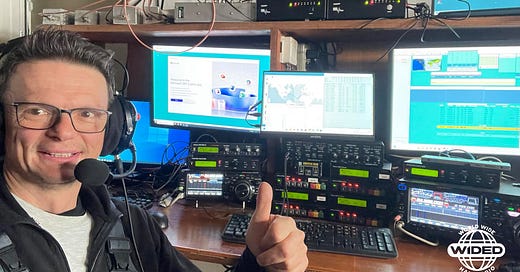



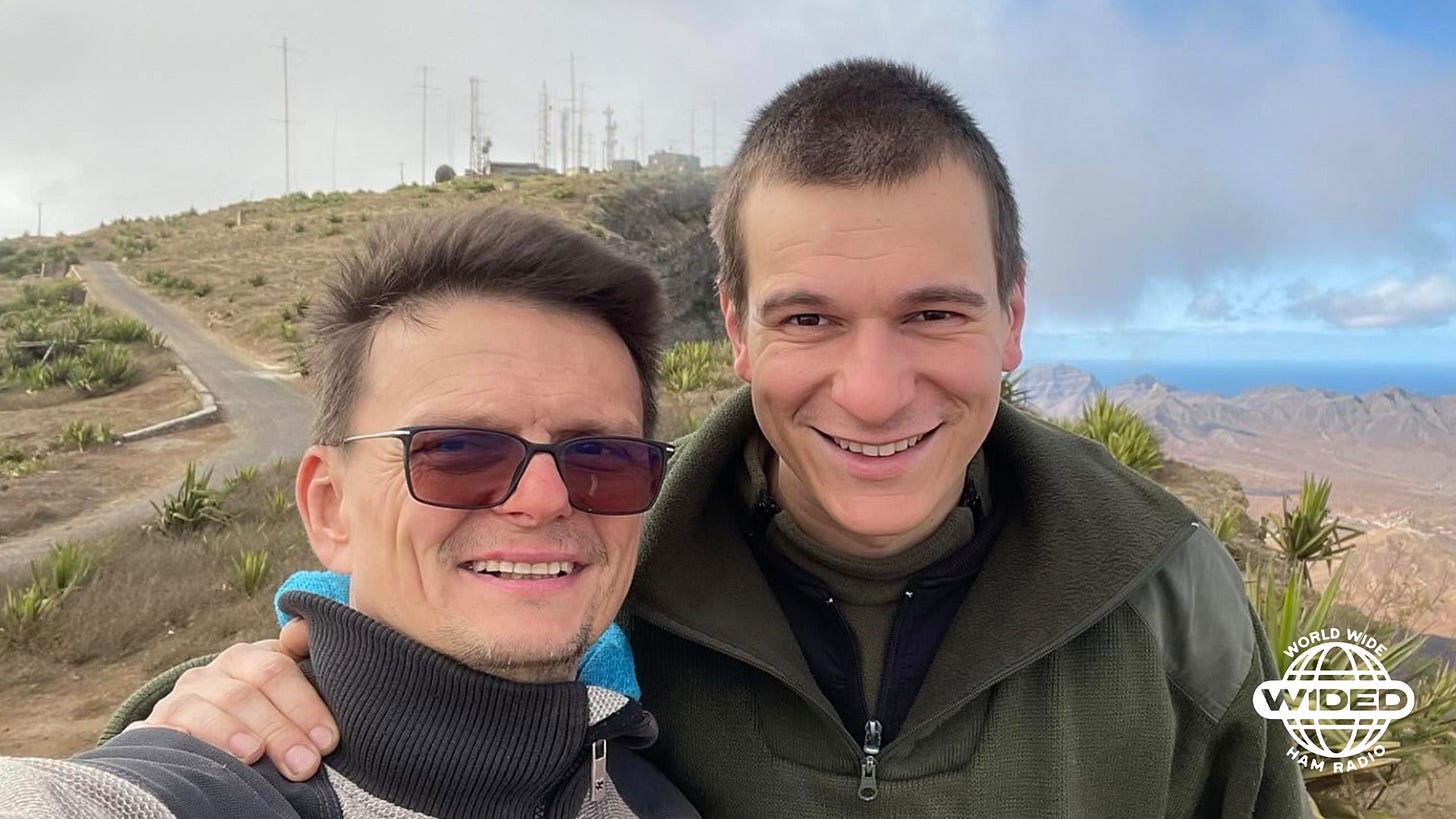
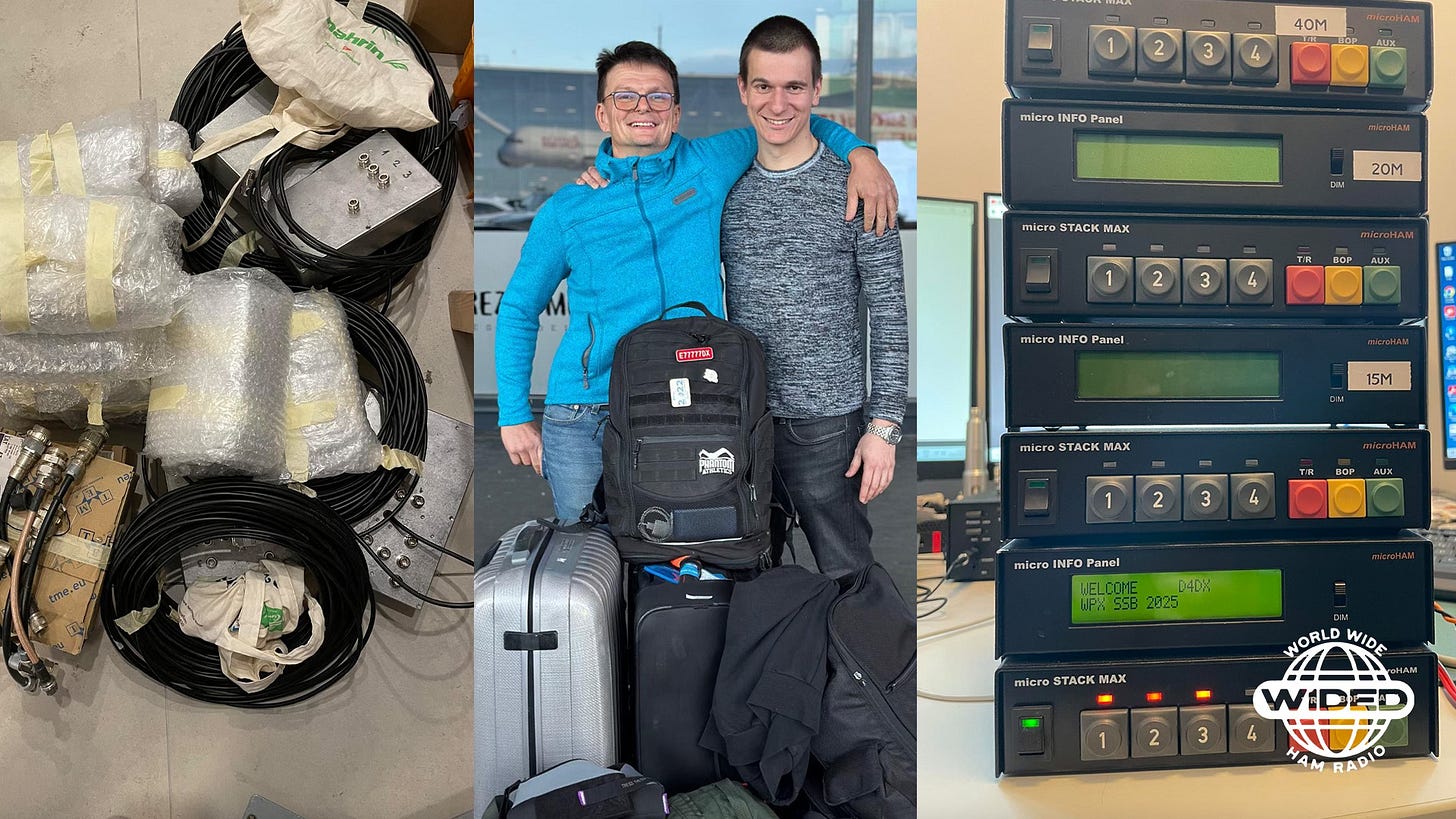
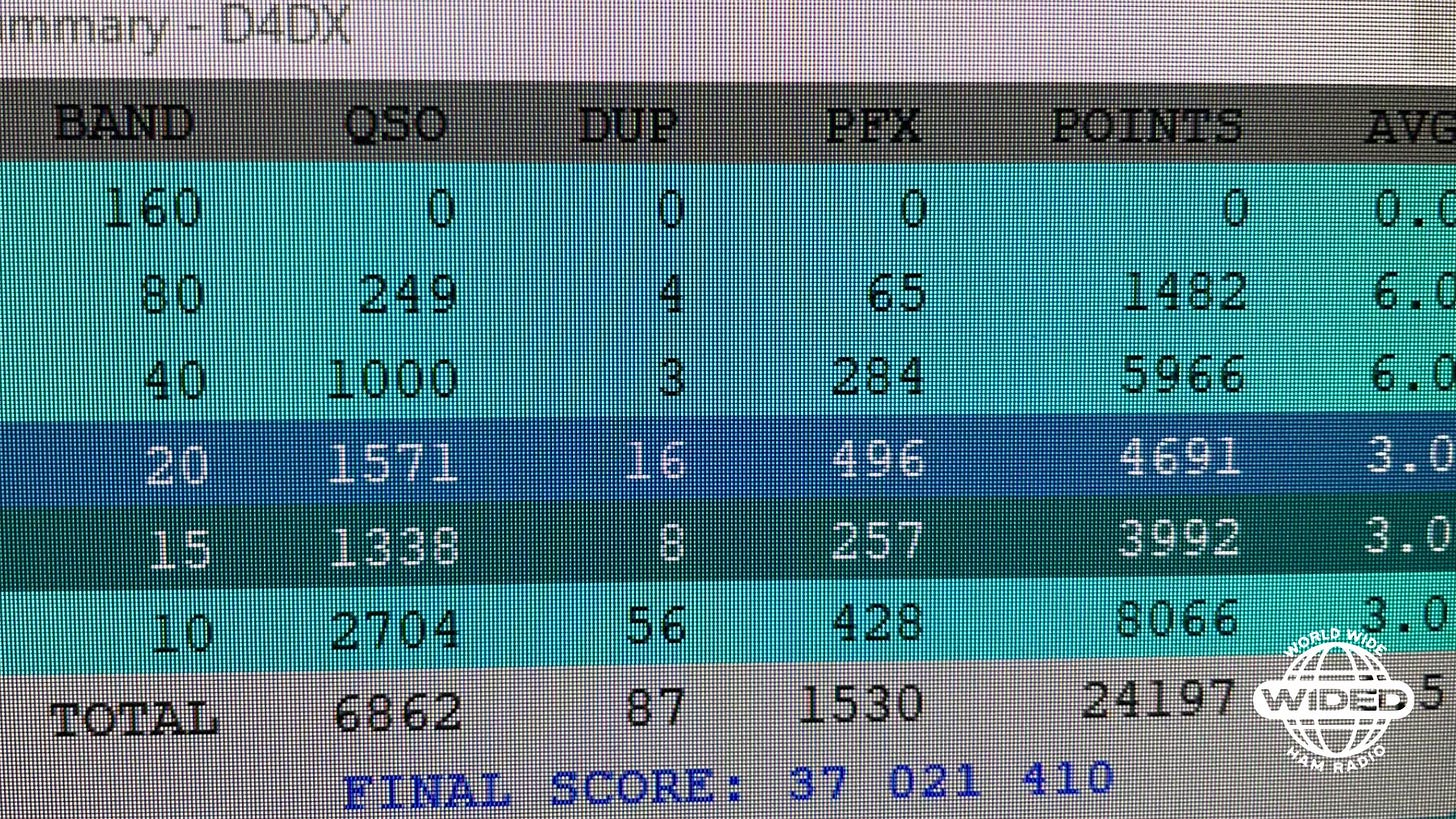
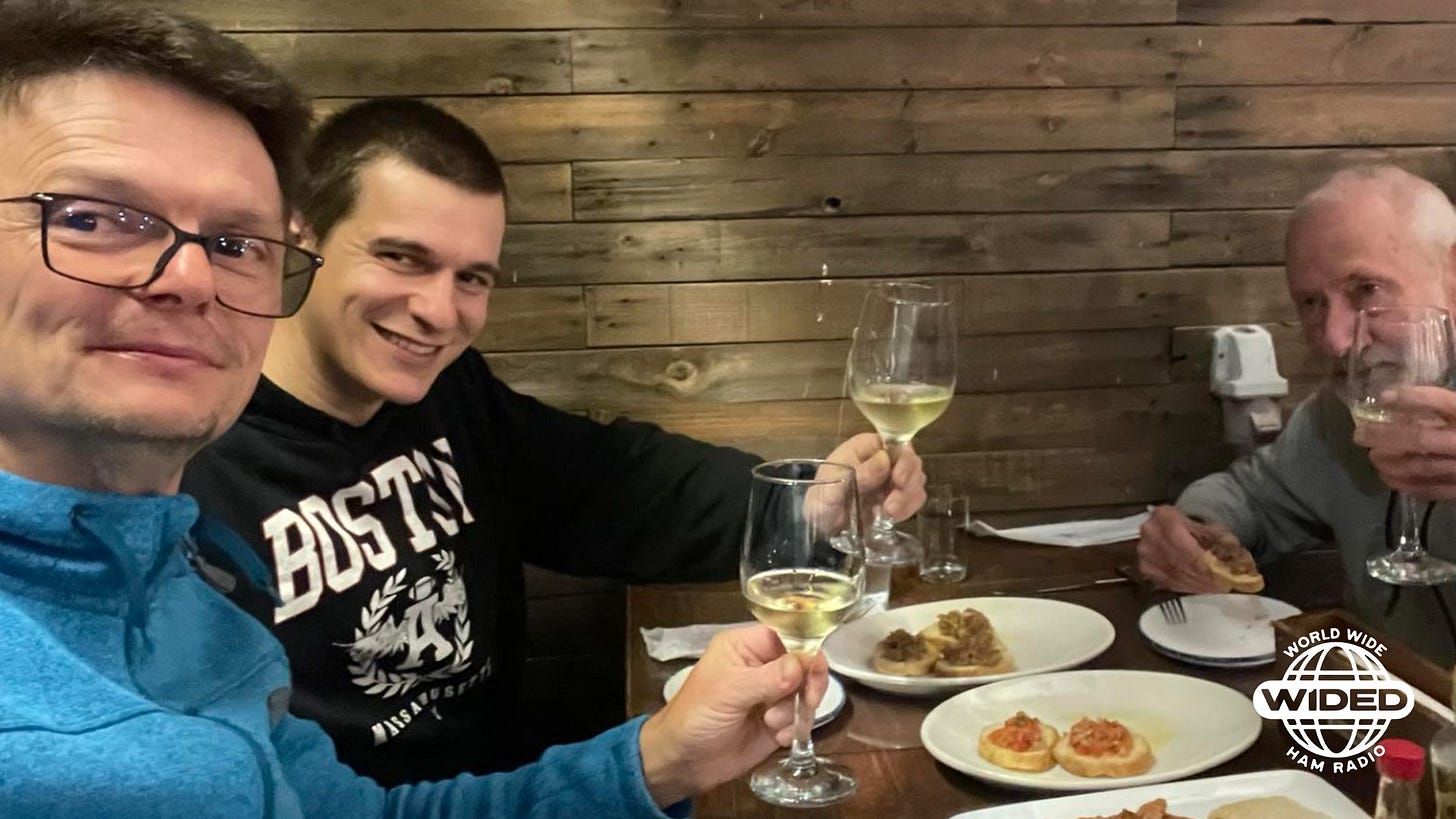
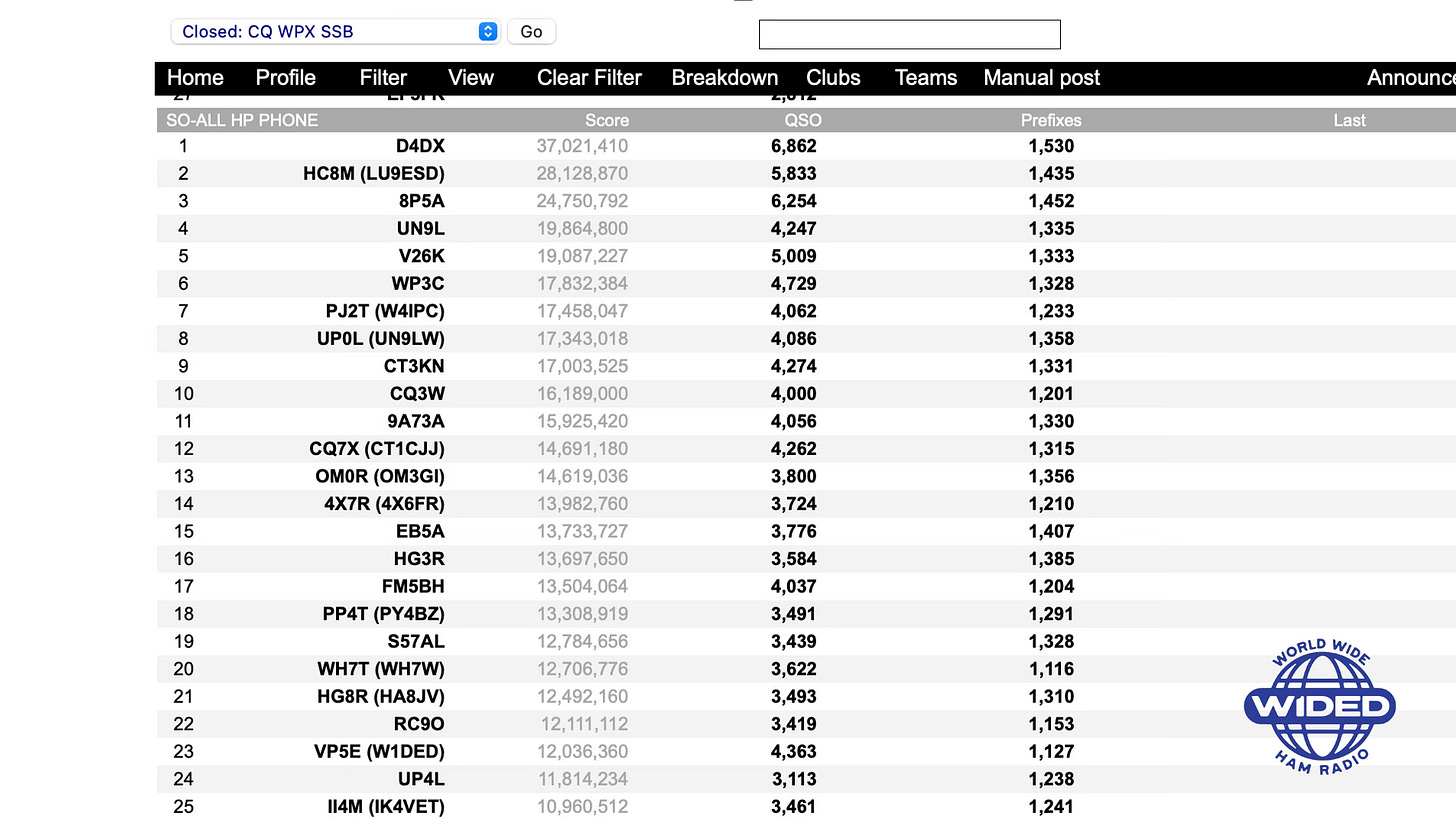
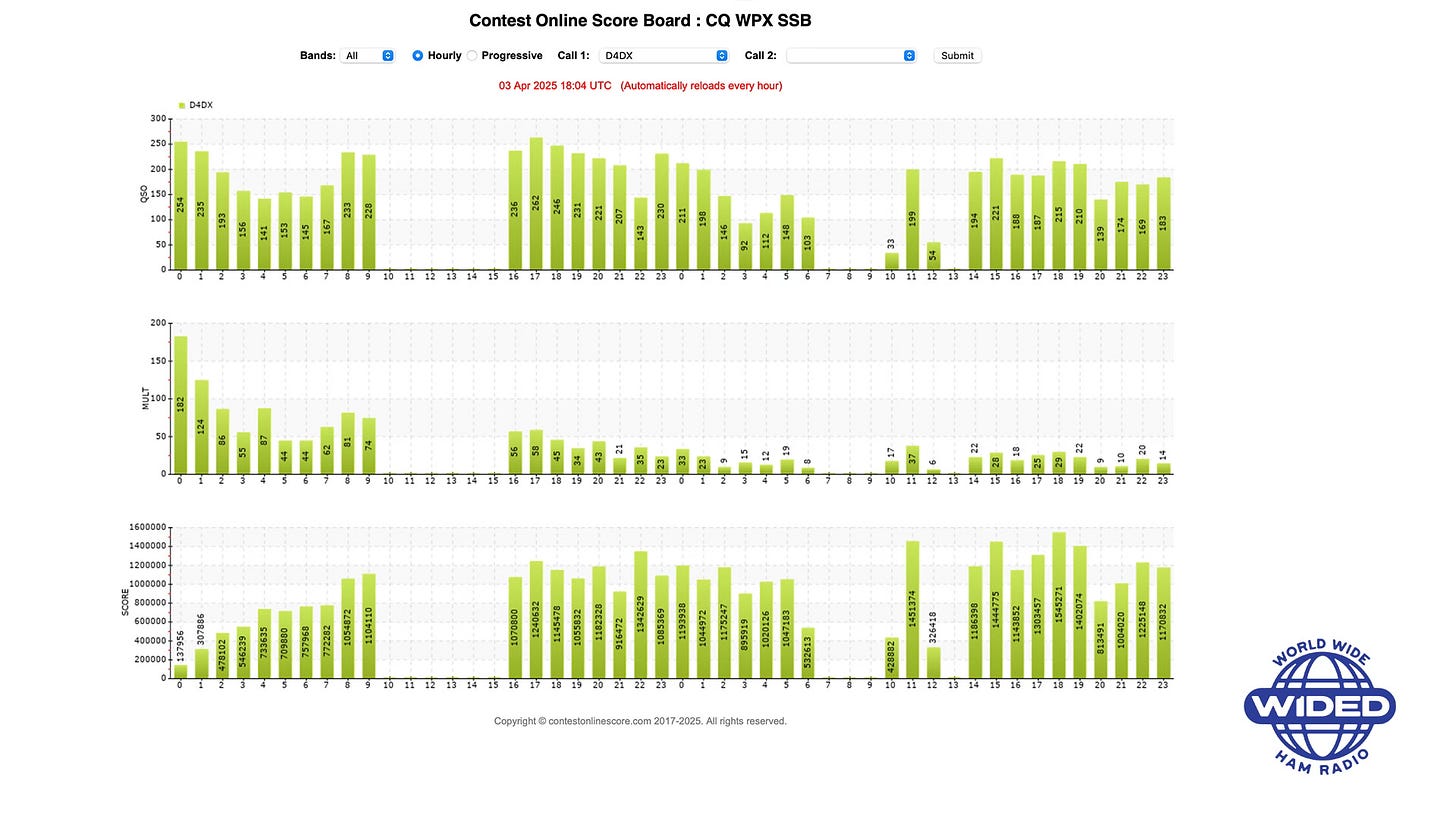
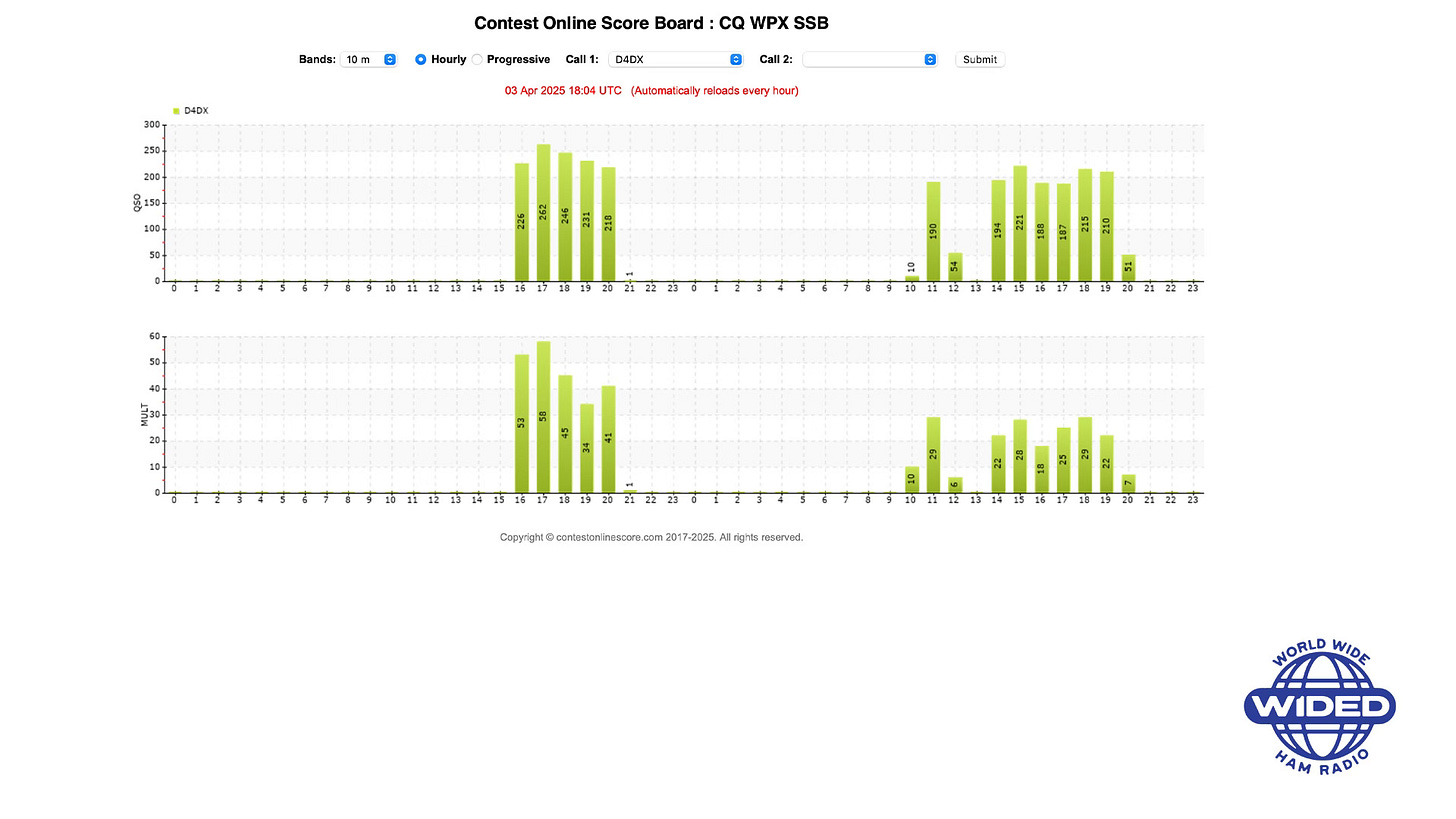
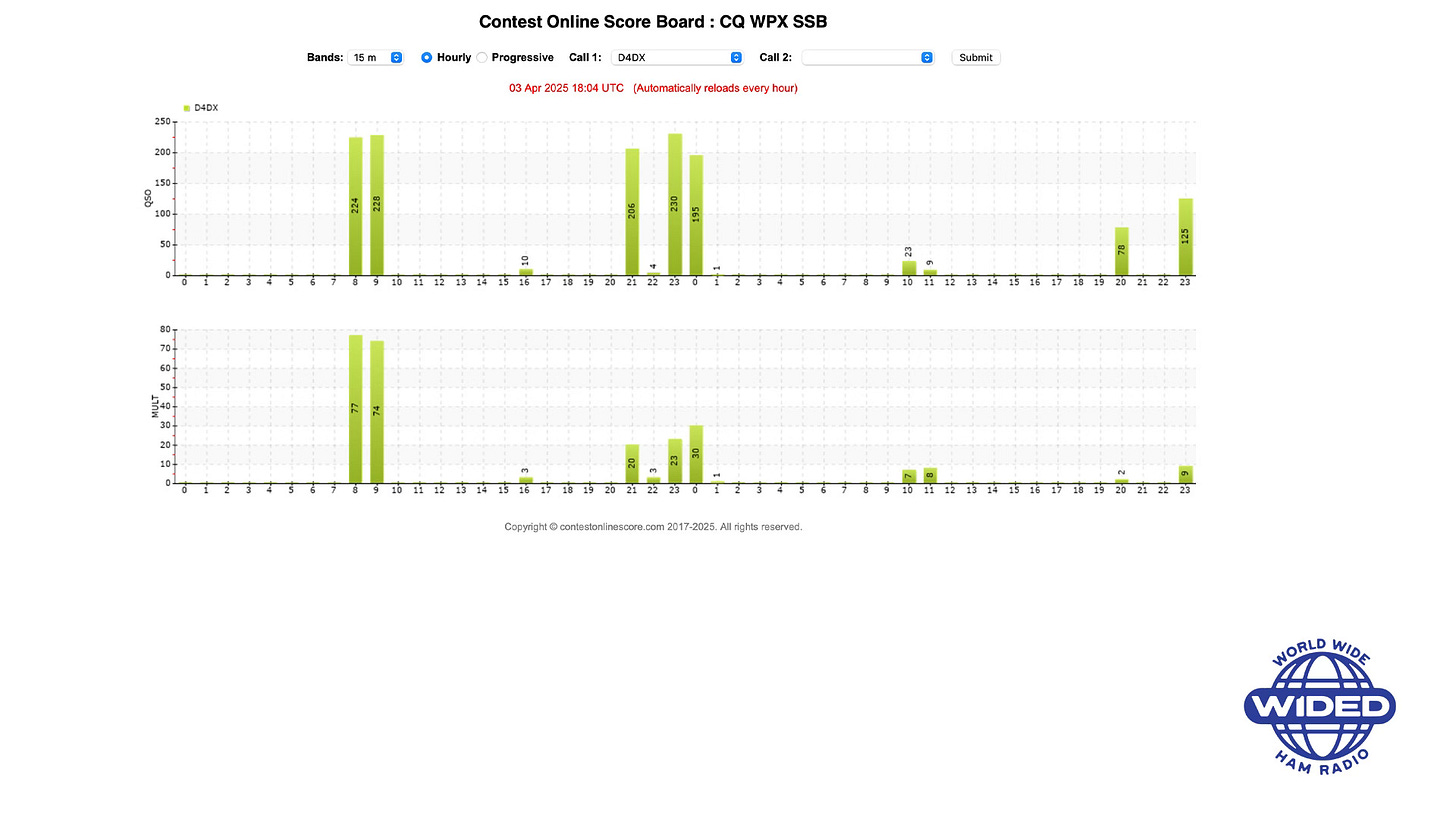
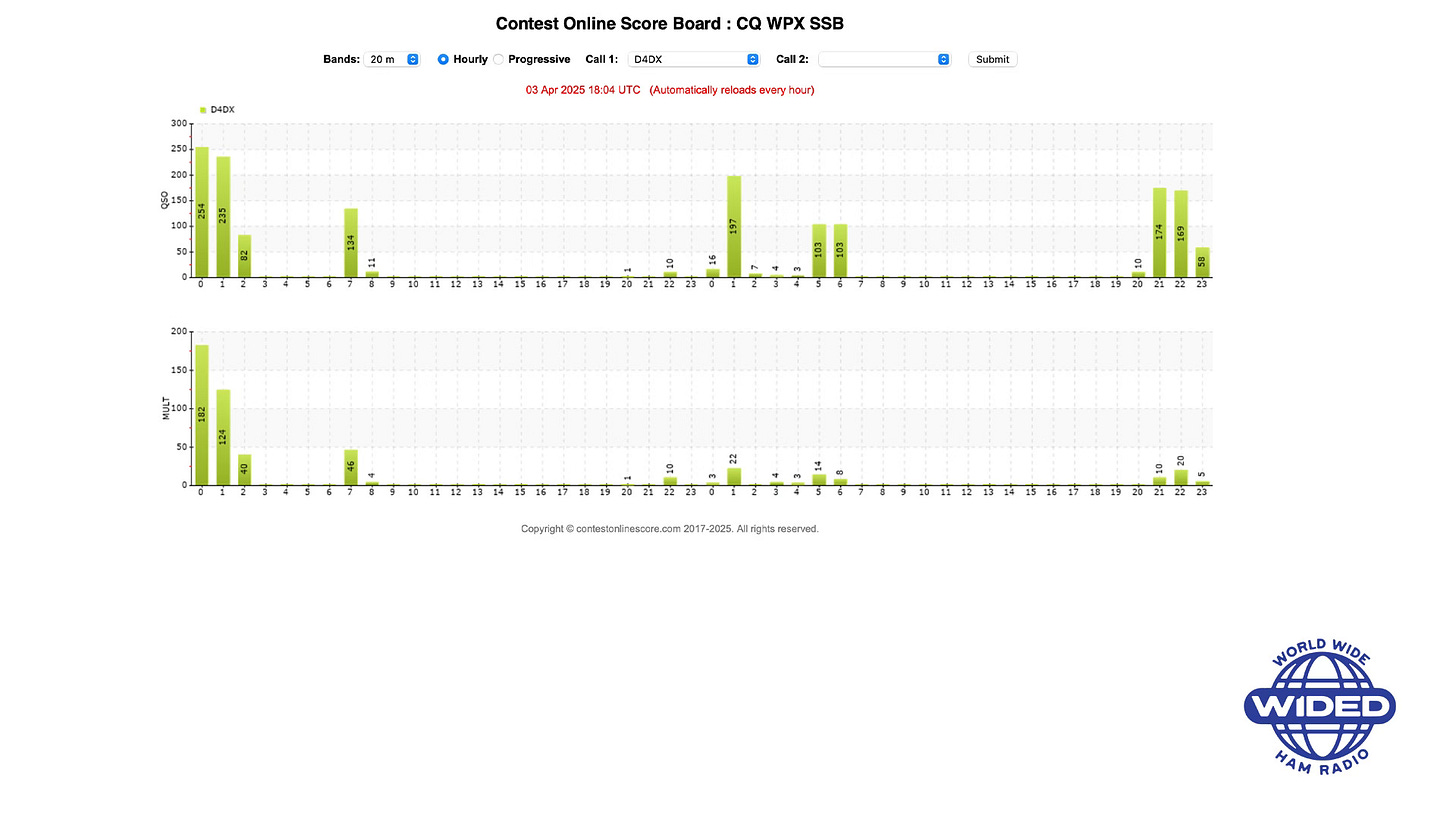
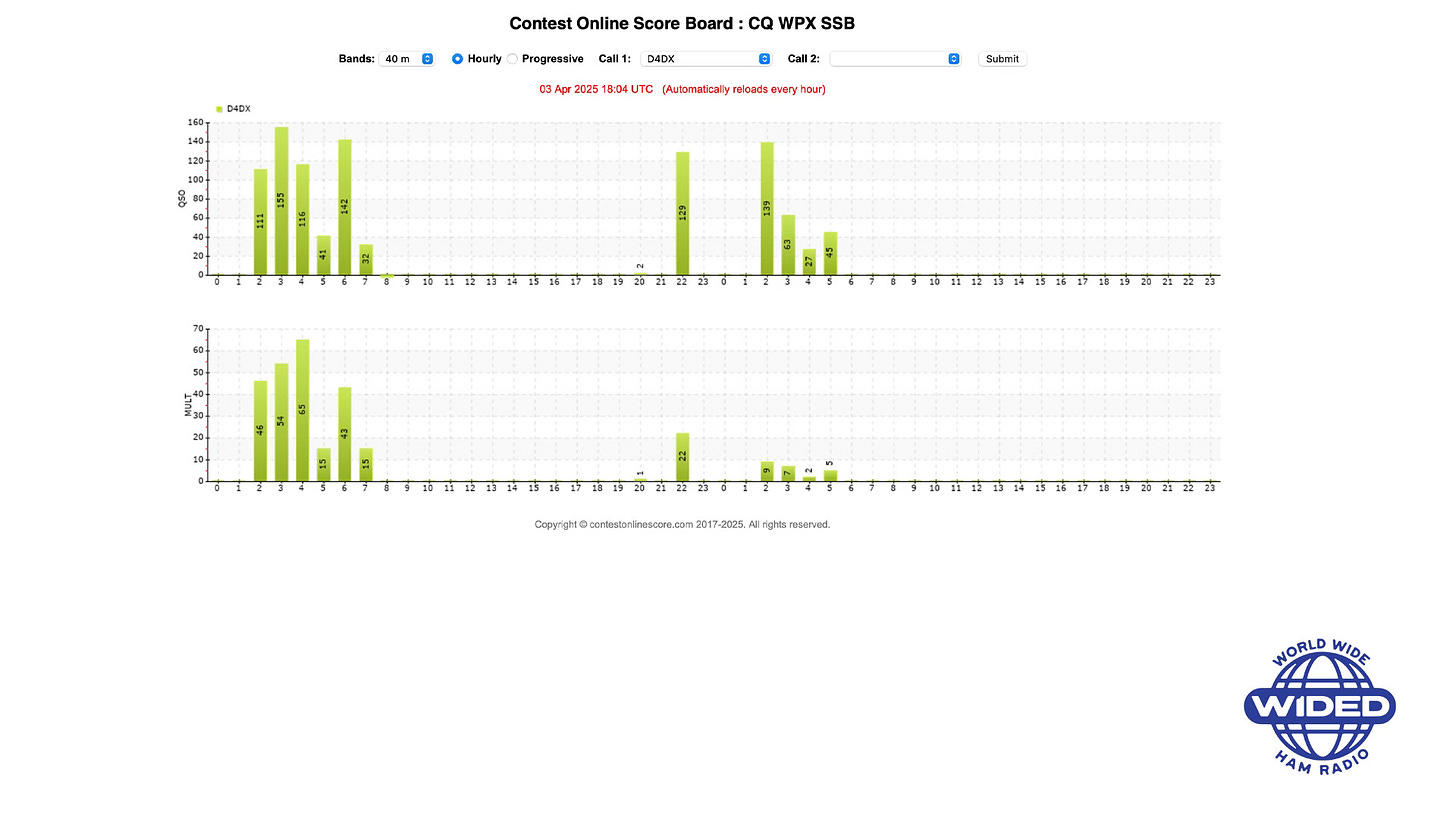
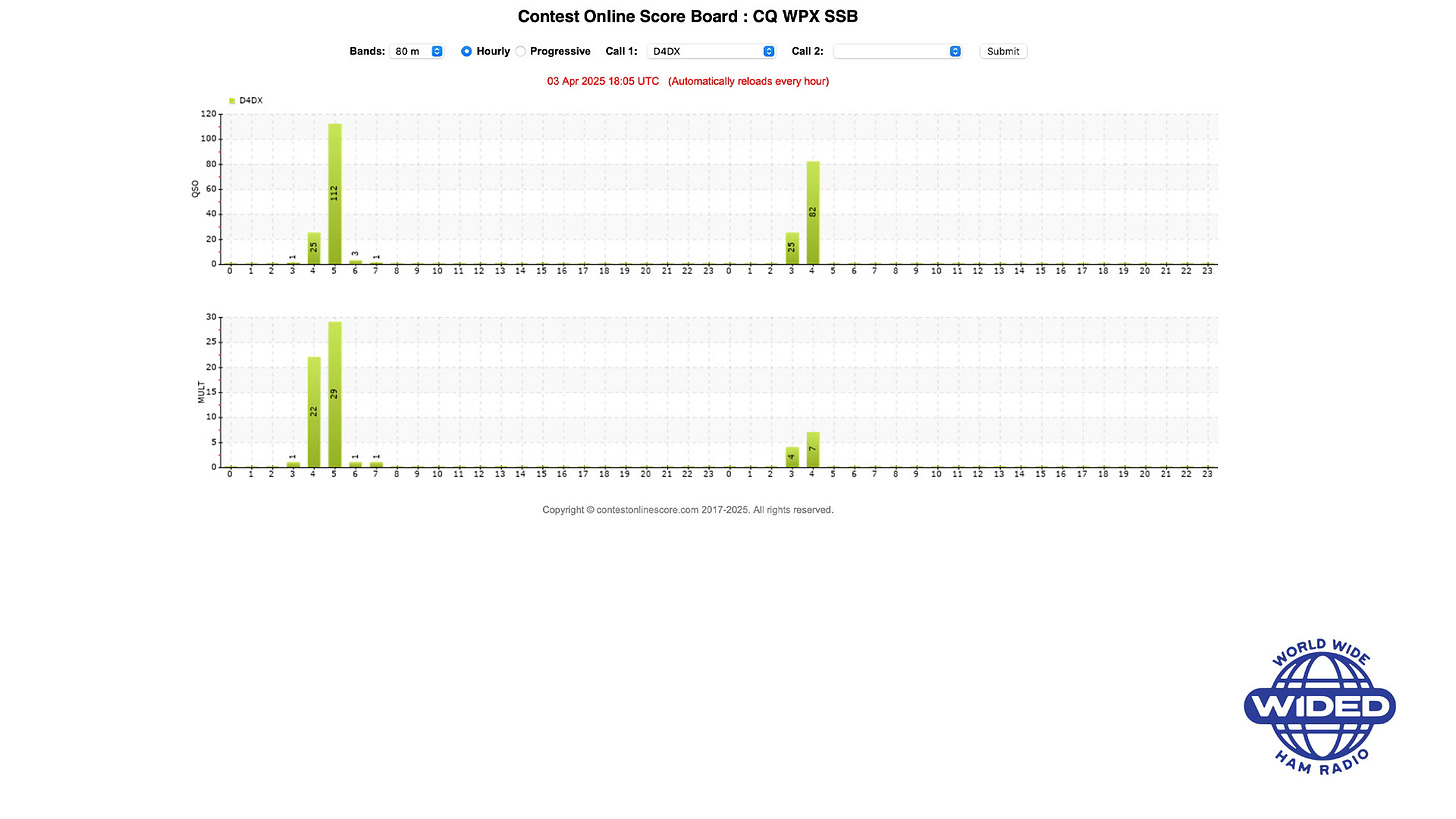

Great articule!
73
XE2B